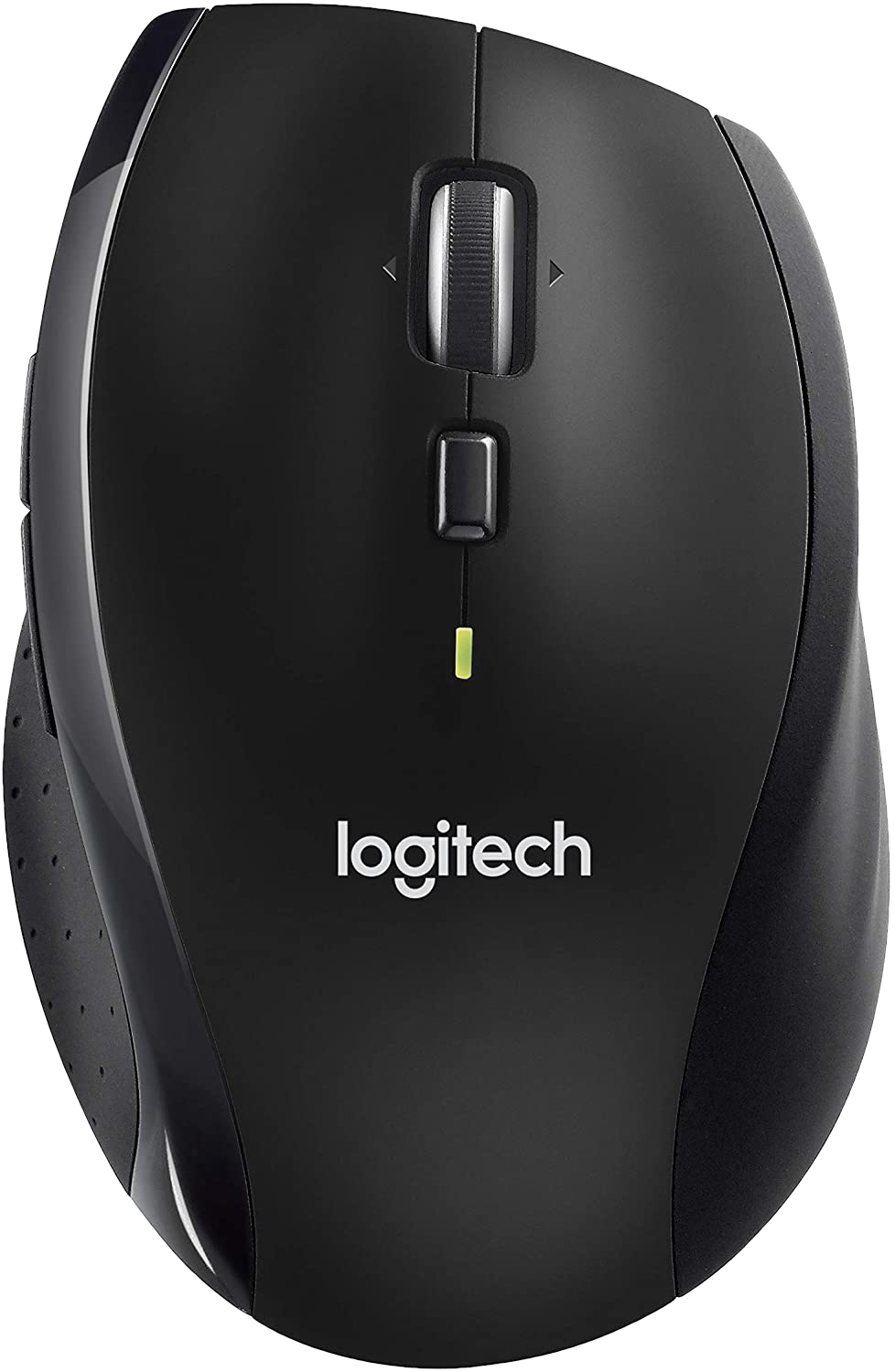Before we dig into why a mouse will help you, we should first go over the 3 key tools to help you navigate the canvas in SketchUp.
Zoom
The Zoom tool will zoom your camera viewpoint in and out. You’ll zoom in if you want to inspect a particular area up close, or zoom out if you want to get a big picture view of your piece all at once.
There are three ways to use the Zoom tool:
- Select the Zoom tool (
 ) from the toolbar.
) from the toolbar. - Use the keyboard shortcut (Z) to select the Zoom tool.
- With a mouse, you can use the scroll wheel in the middle to zoom in and out.
If you select the Zoom tool with the toolbar or shortcut, you’ll see that your cursor changes to a magnifying glass. If you click and drag up, you’ll zoom in. Click and drag down, and you’ll zoom out.
Orbit
The Orbit tool will rotate your camera viewpoint around the center. You can rotate up, down, or side-to-side.
There are three ways to use the Orbit tool:
- Select the Orbit tool (
 ) from the toolbar.
) from the toolbar. - Use the keyboard shortcut (O) to select the Orbit tool.
- Click and hold the scroll wheel on your mouse, and dragging your mouse around.
If you select the Orbit tool by toolbar or shortcut, you’ll see your cursor changes to an orbit icon. Clicking and dragging around will rotate you around the center of your canvas in whichever direction you drag. Similarly, if you click and hold the scroll wheel on your mouse then you will rotate in whichever direction you drag.
Pan
The Pan tool will move your camera’s viewpoint vertically and horizontally. This will allow you to move around the canvas.
Once again, there’s three ways to select the Pan tool:
- Select the Pan tool (
 ) from the toolbar.
) from the toolbar. - Use the keyboard shortcut (H) to select the Pan tool.
- Hold shift while clicking and dragging the scroll wheel on your mouse.
This keyboard shortcut isn’t as obvious. Zoom (Z) and Orbit (O) are fairly straightforward, but H for Panning? The best way I can think of to remember is to think of H for hand, like the tool’s icon.
And if you select the Pan tool from the toolbar or shortcut, you’ll see your cursor changes to a hand icon. Clicking and dragging with this tool selected will move you in whichever direction you’re dragging. Similarly, using the combination of shift and the scroll wheel click-and-drag you will move in whichever direction you’re dragging.
Why a mouse will help you work faster
While you can get by without a mouse (like using a laptop trackpad), it will be much more efficient to navigate around with one. And that’s because a mouse has a scroll wheel; the fastest method to activate each of the navigation tools.
It is faster with a mouse because you don’t have to select the tools to use them. You can simply start zooming, rotating, or panning using just your scroll wheel. And once you get the hang of it, you’ll find that it’s second nature. You’ll often navigate around with your mouse without thinking about it.
And looking past speed (because you could just get really good with keyboard shortcuts), a mouse has one other advantage. And that is that using the scroll wheel on your mouse, you can actually zoom, pan, and orbit while another tool is selected.
Being able to move around with another tool selected can be a more common use case than you might initially think. For example, you may find yourself trying to drag a rectangle from one partially concealed reference point to another. I find this can often be the case with recessed joinery like mortises or dadoes. To accomplish this, you may want to move your camera to get the first reference point in view, start dragging your rectangle, rotate to bring the second reference into view, and then complete the rectangle.
Logitech Marathon
If you need a mouse, I have been using Logitech mice consistently for many years without issue. The Marathon is a good all-around mouse for the price. It’s large enough and sculpted well so that it fits comfortably in your hand. And its scroll wheel has two modes: one where it glides freely for fast scrolling, and one where it clicks as you rotate it for precision.
In summary
Getting familiar with using your mouse (or navigational keyboard shortcuts) will dramatically increase your ability to work cleanly and precisely. After you've mastered these, take a look at how the direction of your mouse movement affects your selection in SketchUp. ■

